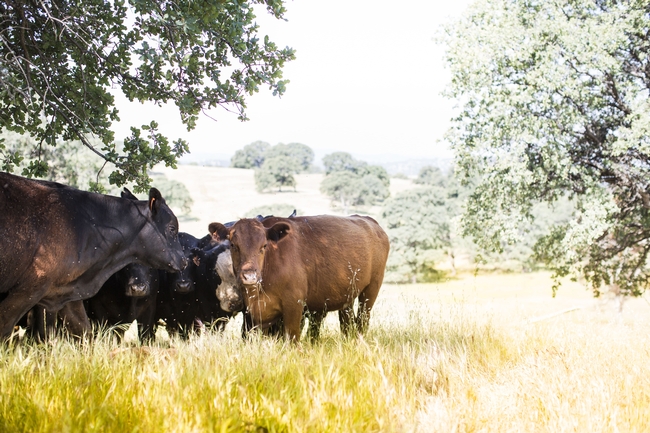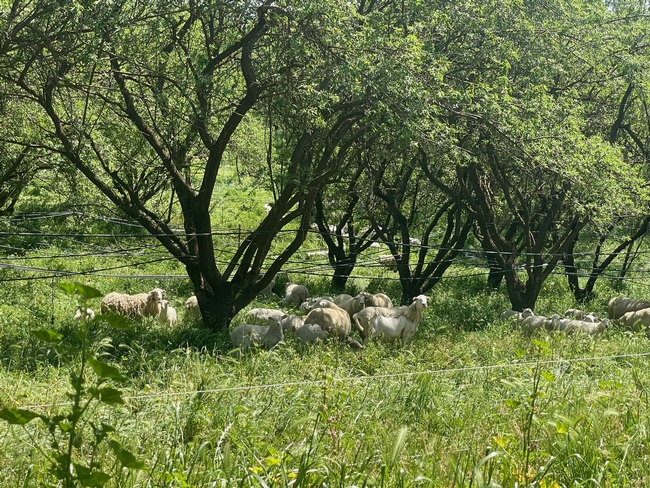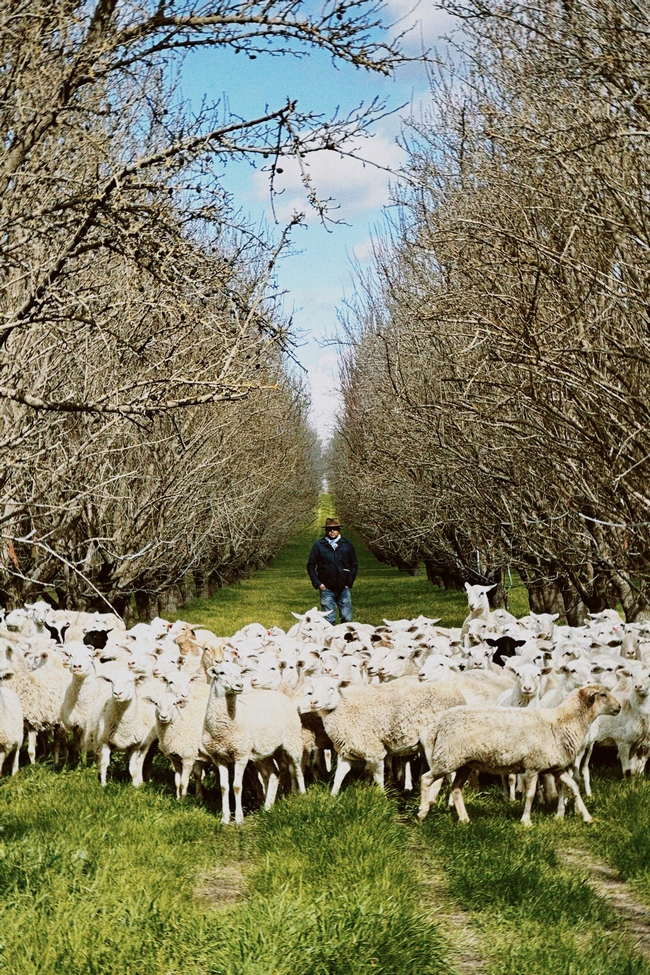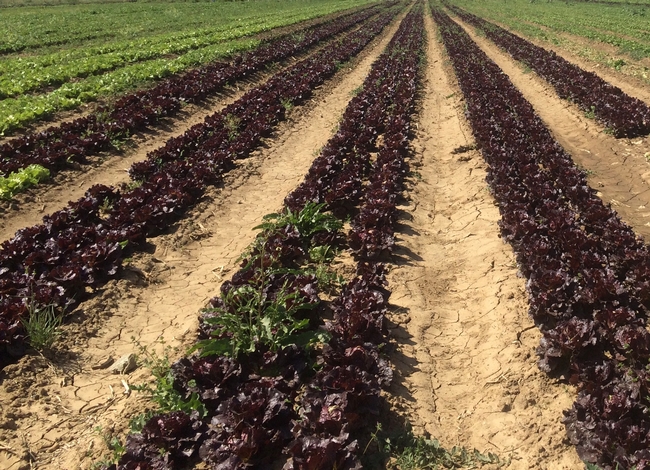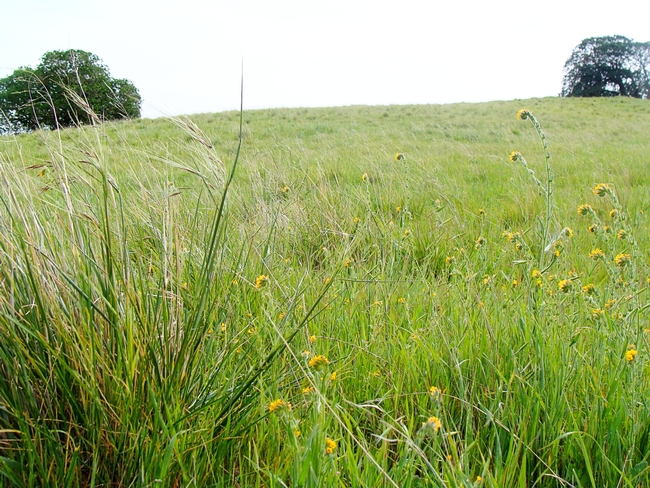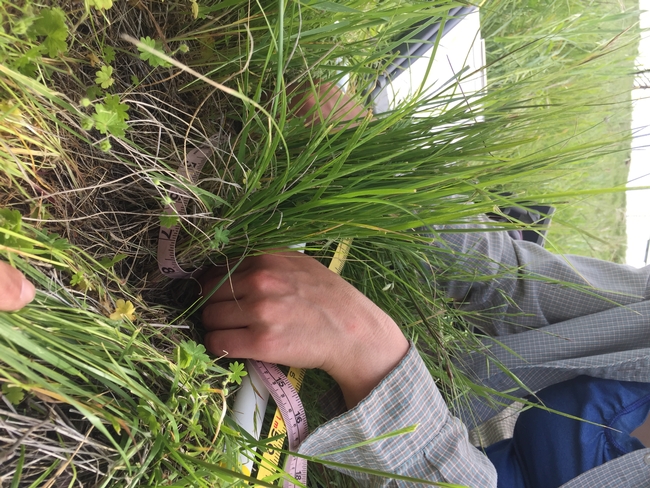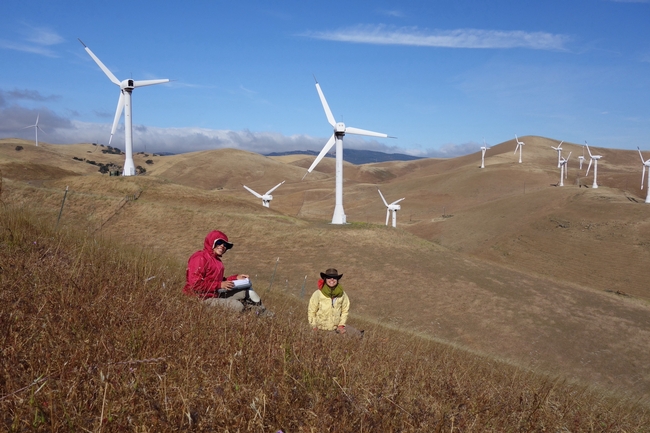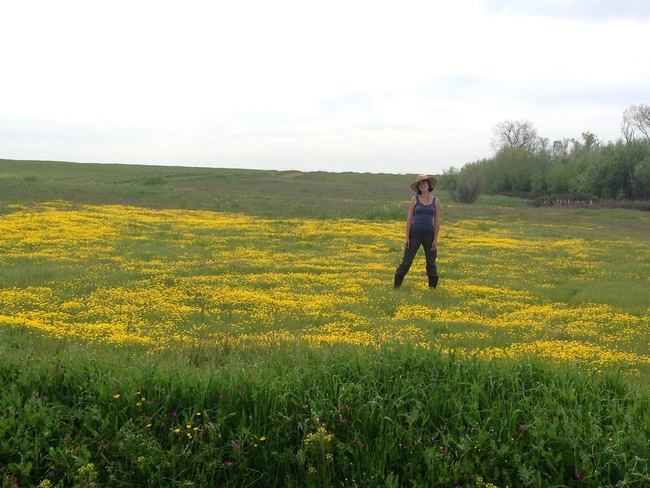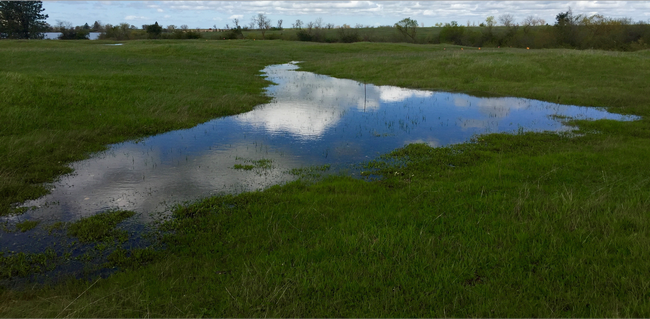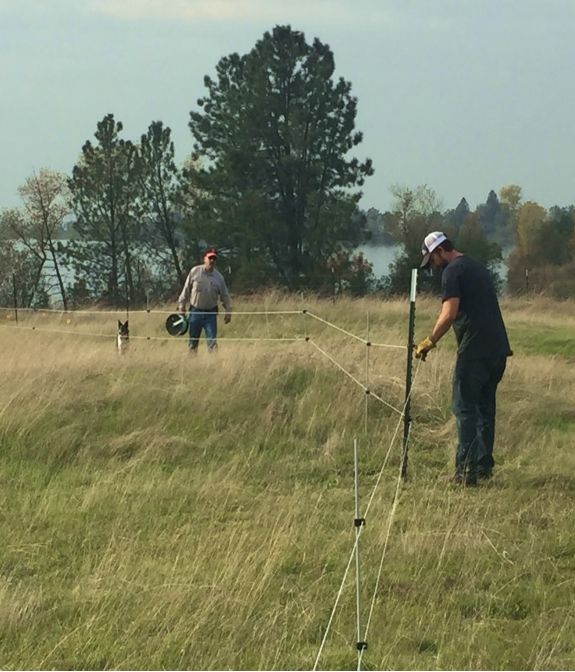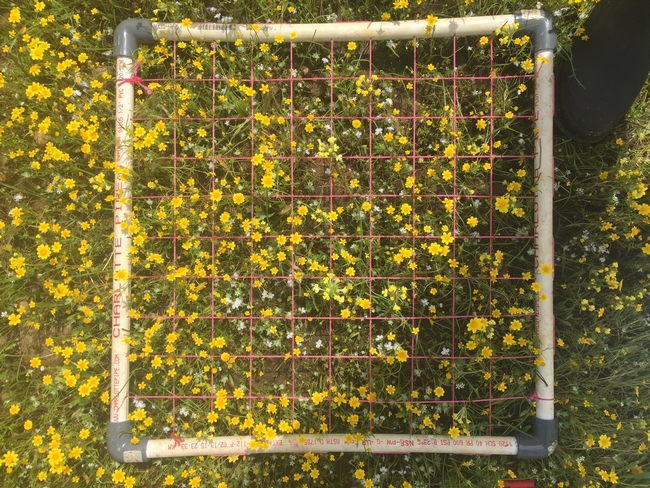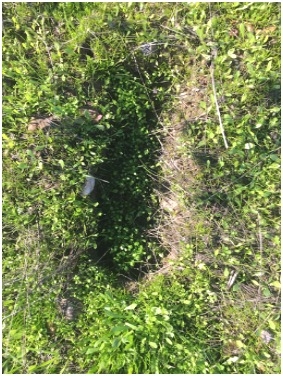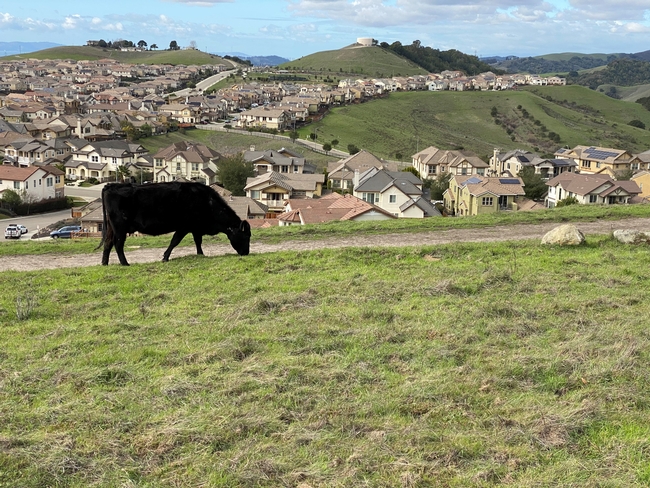Posts Tagged: grazing
Fighting fire with feeding
Are cattle a secret weapon for taking on California wildfires?
California's cattle ranchers contribute a significant amount to the region's culture, economy and food supply, but do they also inadvertently help to temper the wildfires that have been plaguing the state? And if so, is it a better alternative – environmentally speaking – to letting grasslands burn?
A new study published in the journal Sustainability delves into the topic, weighing the advantages – and disadvantages – grazing cattle bring to the table. Researchers, including scientists from University of California, Davis and UC Agriculture and Natural Resources, set out to calculate the greenhouse gas emissions of cows consuming vegetation that would otherwise burn in wildfires. Then they estimated the GHG emissions that would result should that forage be untouched and therefore, consumed by fire, eventually comparing the two.
Feeling the burn
Given the severity of California's recent wildfires and the belief they will continue and even escalate in the near future, it's a discussion worth having, said Frank Mitloehner, an expert in animal agriculture and air quality from UC Davis, director of the CLEAR Center and one of the researchers who contributed to the peer-reviewed article.
“Each year from 2010 to 2020, California lost on average 89,000 acres of grassland to wildfires,” said Mitloehner, who is also a Cooperative Extension specialist. “In addition to the obvious disruption and devastation they caused, the fires spewed greenhouse gases and harmful particulate matter such as black carbon into the air and into our atmosphere. Those alone threaten climate health and human well-being.”
A fast and furious gas
Cattle are adept at eliminating herbaceous fuel as they graze. However, at the same time, their specialized digestive system produces methane that is expelled most often in the form of enteric emissions … more commonly known as belches. By way of background, methane is a potent greenhouse gas that warms the atmosphere at 25 times the rate of carbon dioxide over 100 years. But it's only in the atmosphere for 10 to 12 years after it's emitted. Following that, it's broken down into carbon dioxide and water vapor.
For that reason, Mitloehner refers to methane as a “fast and furious” gas. Furious because it warms with a vengeance and fast because it does so for only a short time, especially when compared to carbon dioxide. Furthermore, because of the biogenic carbon cycle, whereby plants extract carbon dioxide from the atmosphere for photosynthesis, the warming of methane and its byproducts can end entirely when it's hydrolyzed and used by plants.
How researchers calculated emissions
In order to determine if grazing, methane-emitting cattle are better for the atmosphere than burning grasslands, Mitloehner and the other researchers employed a method known as “Monte Carlo simulation,” a mathematical technique used by scientists to predict outcomes of an uncertain event.
Looking exclusively at methane emissions, they found it's better to have cows eat vegetation than to have wildfires burn it. Granted, it's only marginally better, but when one considers other advantages of animal agriculture and conversely, other disadvantages of widespread, uncontrolled fire, the conversation suddenly shifts.
“Even if cattle provided no other benefit to us, which certainly is not true, we can now make the case that they are helpful to us in yet another way,” Mitloehner said.
Friends or foes?
It goes without saying that one would be hard pressed to find much good to say about wildfires, but that doesn't hold true for animal agriculture. The industry provides jobs and supports the economy in other ways as well. Plus, it is a major source of protein-rich food that is in increasing demand as the world's population continues on a trajectory toward 10 billion people by the year 2050.
Where global warming is concerned, the industry is in the unique position of being able to reach net-zero warming, also known as climate neutrality, if it continues to aggressively chip away at its methane emissions, which Mitloehner asserts is of critical importance to the planet. “Few other sectors can reduce its warming to net zero and still be of service to society, but agriculture can because of the way methane behaves in the atmosphere,” he says.
To be clear, grazing cows are no match for wildfires. Yet, in addition to everything else the sector does for us, slowing the burn and keeping relatively more methane from entering the atmosphere are not nothing.
In addition to Mitloehner, authors of the study are Cooperative Extension advisors Sheila Barry, Devii Rao and Theresa Becchetti; Rowan Peterson, Ermias Kebreab and Minju Jung of UC Davis; and Felix Ratcliff and Kaveh Motamed of LD Ford.
This article was first published on the website of the CLEAR (Clarity and Leadership for Environmental Awareness and Research) Center at UC Davis.
USDA awards $2 million to study livestock grazing in organic orchards
UC, The Organic Center, University of Rhode Island partner on $3.5m food-safety study for organic produce growers
Grazing sheep and other livestock can help convert cover crops to fertilizer for orchard crops. To develop best management practices, the University of California and The Organic Center are collaborating on research to help organic orchard growers safely incorporate livestock grazing into their farming practices. The project is funded by a $2 million grant recently awarded through the U.S. Department of Agriculture's Organic Agriculture Research and Extension Initiative research program.
Interest in grazing livestock on cover crops in nut orchards has increased in recent years. However, research is needed to determine the best way to improve soil health and pest suppression, and to address concerns about food-borne pathogens and food safety.
“Organic farmers typically follow the USDA National Organic Program standards for raw animal manure, waiting 90 to 120 days between incorporating raw manure into the soil and harvesting the crop,” said Alda Pires, UC Cooperative Extension urban agriculture and food safety specialist in the School of Veterinary Medicine at UC Davis.
“Little research has been conducted to verify adequate waiting periods to reduce contamination risks in integrated crop-livestock production systems,” she said. “This research will fill the knowledge gap and facilitate the development of science-based food safety guidelines for grazing small ruminants in orchards.”
For this four-year project, “Influence of Orchard Grazing on Soil Health and Pest Control While Mitigating Food Safety Risk,” the scientists will study organic almond, walnut and pistachio orchards in two distinct nut-growing regions in California – the Sacramento Valley and San Joaquin Valley. The scientists will assess the effects of livestock grazing of cover crops on bacteria populations, soil health, pest control and economics.
Building soil health
“Growers have consistently raised the need for more information on grazing impacts on nutrient availability during tree growth, as well as potential to build up the biological, physical and chemical pillars of soil health,” said Amelie Gaudin, associate professor and endowed chair of agroecology in the UC Davis Department of Plant Sciences.
Livestock grazing may provide an opportunity to quickly enhance the amount of nitrogen that can be used by plants and microbes when the cover crop is terminated. “This project will help growers develop nitrogen budgets for these more diversified systems and quantify additional benefits and potential tradeoffs for soil health – such as compaction and salinity – to guide the development of place-based best management practices,” Gaudin said.
Pest management
Houston Wilson, UC Cooperative Extension specialist in the Department of Entomology at UC Riverside, will be studying the effects of livestock grazing on orchard pests.
“Navel orangeworm, or NOW, is by far the most destructive pest of almonds and pistachios,” Wilson said. “These moths overwinter in unharvested nuts in the orchard, and so removal and destruction of remnant nuts over the winter is the foundation of NOW control. While farmers typically use machinery to do this, grazing with animals may present a unique alternative that is more cost-effective and provides additional ecosystem benefits, such as soil health and weed control.”
Outreach to farmers
As part of the project, The Organic Center was awarded $75,000 to work with UC Agriculture and Natural Resources to direct national extension and education outreach activities. These will include a social media campaign, webinars and educational sessions and a technical report for growers.
“There is an increasing interest from organic farmers to learn how to incorporate livestock into their operations to gain better soil health and fertility,” said Amber Sciligo, director of science programs at The Organic Center.
“This research is very exciting because it will holistically explore the potential risks and benefits of livestock not just to soil health, but also pest control – a truly interdisciplinary project that matches the whole system of the organic farm.”
Produce food-safety management tools
For another organic food-safety project, Pires and Sciligo will be working with Patrick Baur, professor of Sustainable Agriculture and Food Systems at the University of Rhode Island.
The University of Rhode Island and The Organic Center received $3.5 million from USDA's Organic Agriculture Research and Extension Initiative research program for the new organic food-safety education project.
“We're going to develop a new food safety management tool designed specifically for organic soil amendments,” said Baur, who is leading the project. “We're also going to develop a suite of new communication and training tools aimed at the entire fruit and vegetable sector to build a shared language between organic agriculture and the food safety community and help them work better together.”
As part of the produce project, Pires of UC Davis was awarded $1.16 million to conduct a risk assessment and create a publicly accessible dashboard to meet the specific needs of organic growers operating at different scales, under different cropping systems, in different regions.
Also participating in this project will be Beatriz Martinez Lopez, professor in the School of Veterinary Medicine at UC Davis, and Abhinav Mishra and Govindaraj Dev Kumar of the University of Georgia.
The no-tech way to preserve California’s state grass
Disappearing native is like an environmental Swiss Army knife
Though it is disappearing, California's official state grass has the ability to live for 100 years or more. New research demonstrates that sheep and cattle can help it achieve that longevity.
Purple needlegrass once dominated the state's grasslands, serving as food for Native Americans and for more than 330 terrestrial creatures. Today, California has lost most of its grasslands, and the needlegrass occupies only one tenth of what remains.
It is drought resistant, promotes the health of native wildflowers by attracting beneficial root fungi, burns more slowly than non-native grasses and speeds the postfire recovery of burned lands. For these and other reasons, many who work toward habitat restoration hope to preserve the needlegrass.
“Where it grows, these tall, slender bunches become focal points, beautiful as well as environmentally beneficial,” said Loralee Larios, a UC Riverside plant ecologist affiliated with UC Agriculture and Natural Resources. “However, identifying successful management strategies for a species that can live for a couple hundred years is challenging.”
To meet that challenge, Larios teamed up with University of Oregon plant ecologist Lauren Hallett and Northern California's East Bay Regional Park District. They tracked the health of nearly 5,000 individual needlegrass clumps over six years, including an El Niño rain year as well as historic drought.
The researchers took measurements of plant health including growth and seed production. They placed small bags over many of the grass clumps to capture the seeds and quantify the number of seeds they produced.
Their findings, now published in the Journal of Applied Ecology, were that purple needlegrass did better in places where sheep were allowed to graze. The positive effects of the grazing were amplified in times of wetter weather.
Previously, the park district spent a decade trying to assess the success of its grassland maintenance techniques. However, the district's method of applying a strategy like grazing, and then measuring the percentage of needlegrass clumps in a given area resulted in data that didn't follow a discernable pattern from year to year.
“By tracking each plant over time, rather than scanning broadly across an area, we gained much more clarity about how the grass responds to the grazing,” Larios explained. “Perhaps counterintuitively, we saw that the needlegrass generally died back when sheep weren't allowed to graze on it.”
When sheep were removed from the study sites, the needlegrass in all but two of the sites became less healthy. The researchers would like to learn whether the two sites that remained healthy have needlegrasses that are genetically distinct.
Grazing is a controversial strategy for grassland restoration. Some conservationists believe sheep eating the target grass, particularly during already stressful drought years, does not enhance their survival. As far back as the 1800s, some researchers hypothesized that the combination of grazing and drought resulted in the loss of perennial grasses.
Though drought was not beneficial for any of the plants in this study, the researchers believe grazing helped needlegrass survive in at least two ways. One, by trampling on leaf litter and other organic debris, sheep created space for new needlegrass to grow.
“Sometimes you get litter that's as deep as a pencil — so much dead, non-native grass piles up. It's hard for a little seed to get enough light through all of that,” Larios said.
Secondly, sheep eat non-native grasses that generate growth-suppressing debris and compete with purple needlegrass for resources.
When the Spanish colonized California, they brought forage grasses like wild oats that they thought would benefit cattle. Those introduced grasses spread, and now dominate the state's grasslands.
“Our grasslands are known as one of the world's biggest biological invasions,” Larios said.
California has as many as 25 million acres of grasslands, equivalent to the combined areas of Massachusetts, Connecticut, and Rhode Island. Though Larios does not believe it is possible to rid the state of all non-native grasses, she said it is possible to maintain or even increase the amount of purple needlegrass.
“It's great for carbon storage, which mitigates climate change, it doesn't serve as wildfire fuel, and cultivates a space for wildflowers that pollinators are then able to use,” Larios said. “We want to keep all those benefits.”
Once perceived as a problem, conservation grazing by cattle a boon to vernal pools
Giving 1,200-pound cows access to one of California's most fragile and biologically rich ecosystems seems a strange way to protect its threatened and endangered species.
But a recently published study suggests that reintroducing low to moderate levels of cattle grazing around vernal pools – under certain conditions – leads to a greater number and greater variety of native plants.
Ecologists consider vernal pools – ephemeral ponds that form seasonally – “islands of native habitat” amid California's grasslands that are dominated by exotic grasses. These biodiversity hotspots harbor about 200 native species of animals and plants, such as the coyote thistle, which germinates under water and forms a snorkel-like straw to deliver oxygen to its roots – and then “fills in” its stem as the pool dries.
Specially adapted to survive in those stages of wet and dry, many of these species are found only in vernal pools scattered across California – making those pools an urgent priority for conservationists.
During the 1970s and 1980s, vernal pools were fenced off in parts of the state, in the hopes of protecting the flora and fauna from grazing cattle. In the early 2000s, however, UC Davis researcher Jaymee Marty found that grazing was actually crucial to vernal pool biodiversity: once livestock were removed from areas that had been grazed historically, the diversity of plants plummeted.
“Her research was critical to rethinking the best ways to protect the diversity in California's vernal pool ecosystems,” Eviner said.
The Michaels-led study, published in the Journal of Applied Biology, builds on Marty's work, by looking at scenarios where cattle had been blocked from vernal pools for decades, and then observes the rate at which biodiversity returns after reintroduction of the animals. Michaels said she wanted to provide some initial answers to the practical questions that ranchers and land managers have in potentially reintroducing cattle.
“A lot of them had these areas that had been fenced off from grazing for the last 20–30 years, and they were very concerned about what happens if we let cattle back onto these vernal pool grasslands – are there going to be negative impacts because that land had been at rest for a few decades?” Michaels explained.
They discovered that, after reintroducing cattle to areas that had been fenced off since the 1970s, there was a greater abundance of native flora (species like the vernal pool buttercup, bractless hedge-hyssop and bristled downingia), as well as increased diversity among the plants (both in number of species and in how evenly distributed they were).
“Encouragingly, diversity is rapidly restored,” Eviner said, “providing conservationists with strong data to show that rapid action can enhance plant diversity.”
And as for potential worries about cattle making a snack of vernal pool plants, Michaels and her colleagues observed that the cattle appear to be more interested in munching on grasses.
“Anecdotally, we saw very few signs of herbivory on the vernal pool species because the timing is such that [the plants] are underwater for a good part of the late winter and early spring, and then by the time they're blooming, there's plenty of good forage around for the cattle,” Michaels said.
In fact, the cattle seem to be performing a function filled for millennia by native grazers (namely, the once-abundant tule elk), helping to knock down vernal pool species' chief competitor in those transition zones: the grasses.
Instead, microdepressions created by the cattle appeared to encourage the proliferation of native plants. Each hoofprint became a miniature basin – “a vernal pool within a vernal pool.”
“Right in those transition zones, where they could be hosting either the vernal pool species or the upland grasses, just a couple centimeters of soil topography can make a big difference,” Michaels explained. “If a cow comes and steps in that transition zone, and that lowers the soil surface so it stays inundated a little longer, you end up seeing these pockets of vernal pool species that are able to persist.”
Michaels is currently conducting a follow-up study on the hoofprints to pinpoint their role in boosting native plant abundance and biodiversity. Because the prints can last for several years, they might be able to deliver some enduring benefits – and land managers might not have to bring cattle in to graze the pools as often.
“If it's really the hoofprints making the big difference, maybe we don't need to graze every year – only during certain times of year when we know the hoofprints will form well and harden, and then we're good for a few years,” Michaels said.
New UC ANR publication educates public on cycles of cattle production, grazing and economics
The pandemic has brought more people into nearby parks and public lands for hiking, biking and other recreational activities. In areas like the East Bay Regional Parks – a San Francisco Bay Area park system totaling more than 120,000 acres where about 65% of the land is grazed by livestock – visitors might see goats, sheep and, most likely, cattle.
Those encounters with animals (or their manure) represent a prime opportunity for members of the public to learn about agriculture and the ecological benefits of rangelands, according to Larry Forero, a UC Cooperative Extension livestock and natural resources advisor.
As livestock grazing (mostly by beef cattle) constitutes a significant portion of land use across the state, Forero – along with fellow UCCE advisors Sheila Barry and Stephanie Larson – recently authored a UC Agriculture and Natural Resources publication summarizing the mechanics of cattle production.
“Beef Cattle on California Annual Grasslands: Production Cycle and Economics,” published in October and available as a free download on the UC ANR Catalog, describes the seasonal phases of cattle production and the factors that impact ranchers' financial calculations and management decisions.
“This concise publication walks through annual stock flows and calendar of operations and gives tables for estimating costs, return over cash, and gross income under various scenarios,” said Forero.
“Even if only a relatively small percentage of park goers are interested, you still touch a lot of people with a document like this,” Forero explained.
He said he hopes park signage and QR codes will direct visitors to the publication for more information about the cattle and their seasonal movements.
“People often wonder where the cattle go when they leave the park and when they will return,” co-author Sheila Barry said. “The cattle may go to grass or feed yards in other places in California or even out of state.”
But, as this new UC ANR publication explains, the cattle production cycle turns over anew.
“There will be more cattle next fall, I promise,” Barry said.

